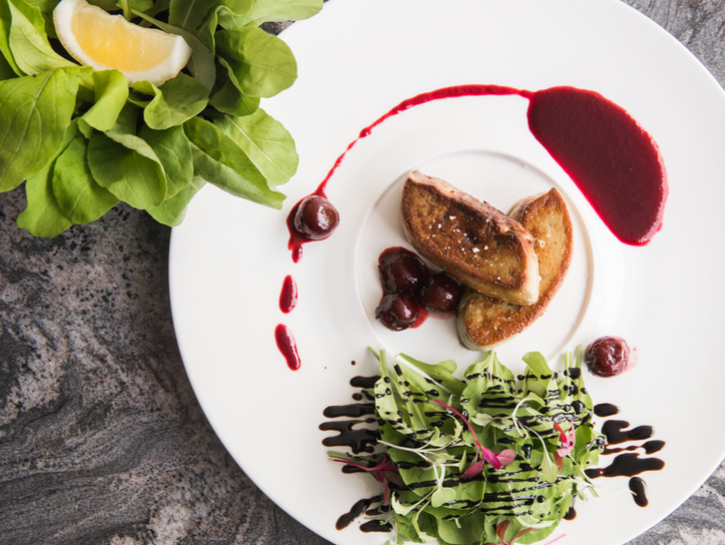What Is Foie Gras?
Foie gras is a French delicacy made of fattened goose or duck liver — “foie gras” literally translates to “fatty liver.” Both types of foie gras are supremely rich and tender, which is what makes this dish a delicacy only found at fine dining restaurants, where it is typically served as an appetizer.
There are two types of foie gras: Duck foie gras and goose foie gras. Duck foie gras has a robust flavor, whereas goose foie gras often has a more mild taste. Both, however, share many of the same rich, soft texture and creamy, melt-in-your-mouth quality.

wayfarerlife/Shutterstock
Why Is Foie Gras Considered A Delicacy?
The reason this fatty liver is considered a delicacy dates back to its early history as a famed dish in France. It became a dish for royalty, touching the lips of famous artists, novelists, kings and noblemen. Foie gras was even declared as “The Dish of Kings” by King Louis XVI. Throughout the years, this reputation has continued — today, foie gras is considered a staple of fine dining and is one of the most expensive animal products in the world.
How Is Foie Gras Served?
In the areas where you can get foie gras, you can typically find it as an appetizer at high-end restaurants. While many meat dishes are served hot, foie gras — after being cooked or fried — is almost always served cold or chilled. The liver is coated with simple seasonings, often just salt and pepper, and pan seared on both sides before being chilled for about 45 minutes and, finally, served. Preparing this dish is a delicate process, as the creamy texture of the liver makes it easy to accidentally melt it. It’s recommended to only sear each side for a few seconds to avoid any catastrophes. Foie gras is sometimes served on sliced baguette that has been warmed up.

javarman/Shutterstock
The Foie Gras Controversy
Though foie gras has a high-society reputation and is considered a fine dining delicacy, the dish is highly controversial because of the way it is prepared. To achieve the most tender and authentic foie gras, the ducks and geese must be force-fed to fatten the liver and prepare it for consumption. The fowl are force-fed through a process called gavage, where a feeding tube is stuck down the esophagus in order to enlarge the liver to maximum capacity. Each bird is force fed multiple times a day. Because of this method, animal rights groups including PETA and the Humane Society of the United States have spoken out against foie gras and say its production is animal cruelty.
Many countries have banned the production of foie gras, including the U.K., Italy, Germany, Poland, Argentina and Australia. The state of California has also banned production of foie gras and has enforced a ban against selling the dish in the past (which could be reinstated). Many retailers have stopped selling the dish due to the controversy, including Amazon, Sainsbury’s and Waitrose. Today, there are only a handful of countries that still produce foie gras: France, Hungary, Belgium, Romania and Spain.
